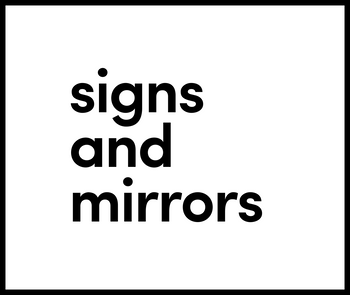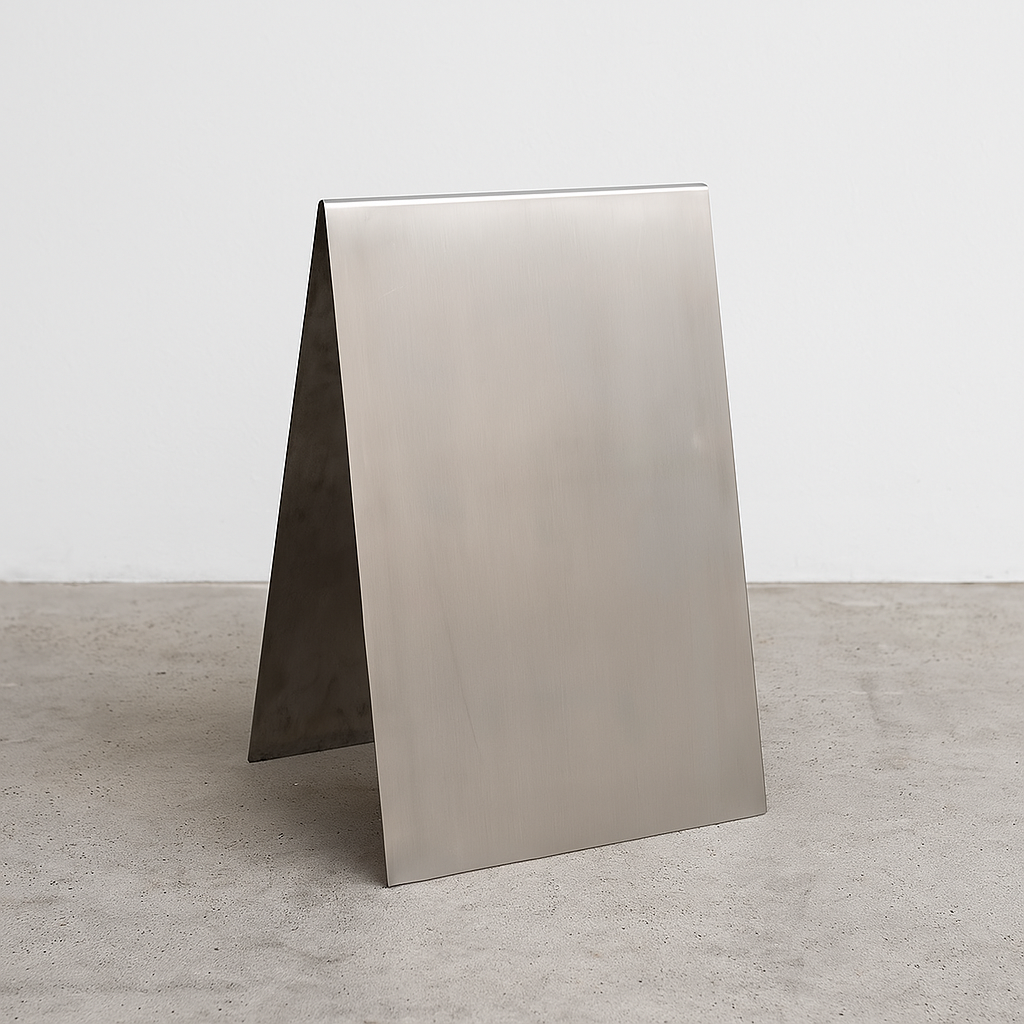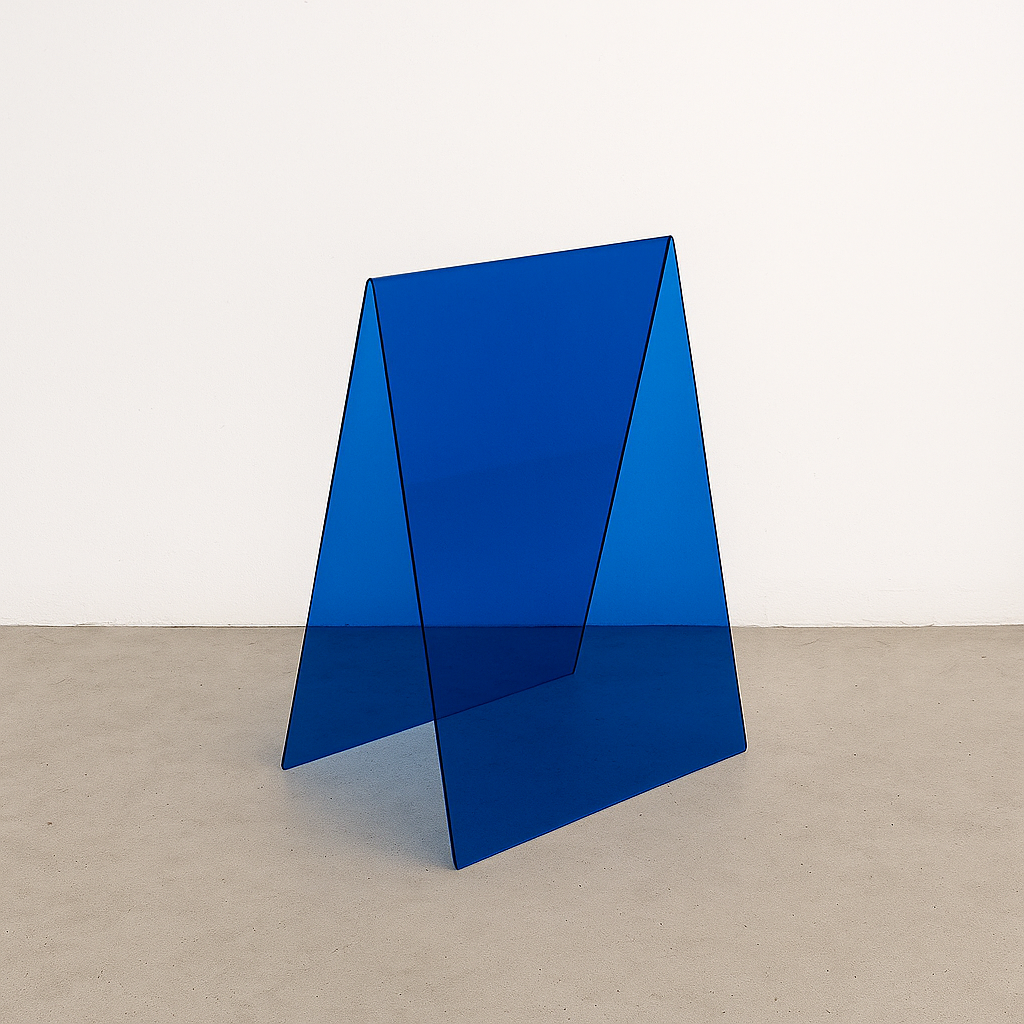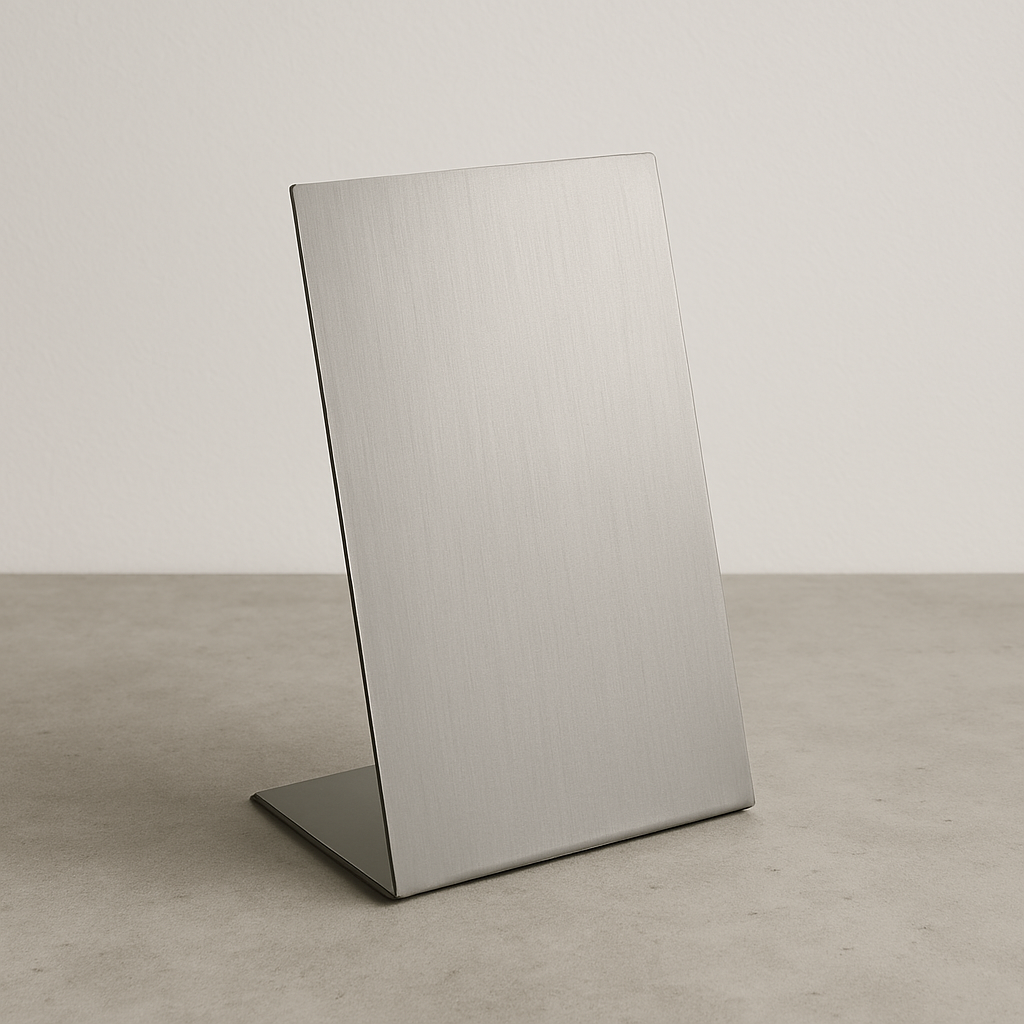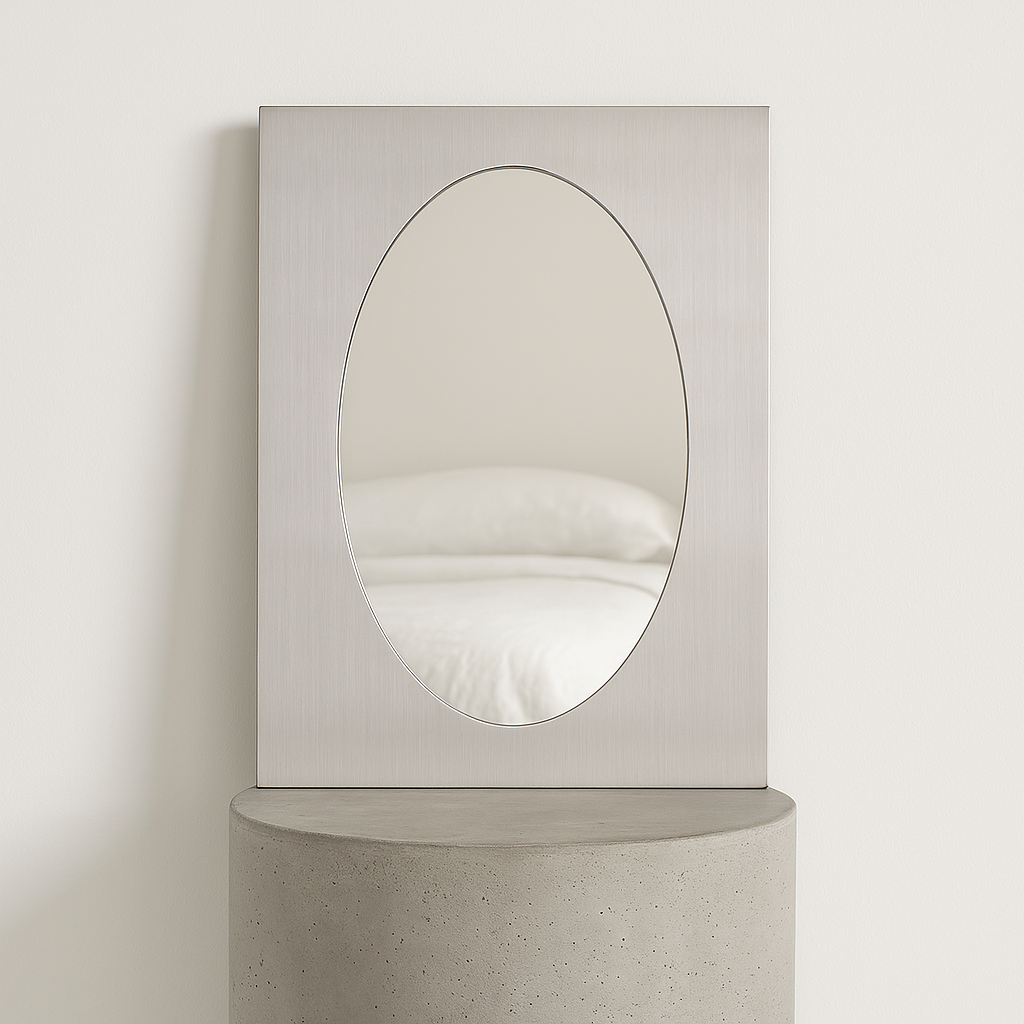Sandwich board signs also known as A-frame signs are one of the simplest and most effective ways to grab attention from people walking by. Whether you're a café trying to advertise daily specials or a boutique highlighting a sale, these signs can help bring more customers through the door. But not all sandwich boards are created equal. From materials and sizes to how easy they are to move, there are a few things to consider before buying one. Break it down so you can choose the right sign that actually works for your space and your goals.
What Are Sandwich Board Signs?
Sandwich board signs, also called A-frame or sidewalk signs, are portable, double-sided signs that stand on the ground in an A-shaped frame. They are commonly used outside storefronts to display messages like promotions, menus, hours, or directions. The structure typically features a metal frame with two flat panels, which can be fixed with a mirrored or brushed finish or designed to hold custom printed inserts. Many models fold flat for easy storage and transport.
Key Factors to Consider When Choosing a Sandwich Board Sign
Choosing the right sandwich board sign depends on where you’ll use it, how often the message needs to change, and what kind of weather or foot traffic it will face. Below are the main criteria to evaluate before buying.
1. Material Type: Indoor vs. Outdoor Use
The durability of a sandwich board sign largely depends on the material it's made from. For outdoor environments, materials need to withstand exposure to sunlight, moisture, and wind. Indoor signs don’t require the same level of resistance and can be lighter or more affordable. When choosing a material, consider both the visual style and the environment the sign will be placed in.
Common material options include:

- Mirrored Stainless Steel - Highly weather-resistant, suitable for upscale or long-term outdoor display. Offers a sleek, polished look and is used in premium A-frame signs with either rounded or squared design options.
- Brushed Stainless Steel - Matte finish with the same durability as polished steel, offering a more subtle, modern aesthetic for outdoor use.

- Mirrored Acrylic - Lightweight and reflective, best used in protected outdoor areas or for short-term promotions. Acrylic is more fragile than metal but offers a strong visual impact.
2. Size and Visibility
The size of your sandwich board directly affects how visible and effective it is in your location. It needs to be large enough to catch attention from a distance, but not so big that it blocks sidewalks or violates local regulations. Consider how far away someone should be able to read the message and how much space is available in front of your storefront.
Typical sizes:
- 600x900mm (approx. 24x36 inches): Common for retail footpaths with good visibility.
- 18x24 inches: Compact size for tighter spaces or low-traffic areas.
- 19.5x33 inches: Larger option for high-traffic zones or wider sidewalks.
3. Portability and Stability
A sandwich board sign should be easy to move, store, and reposition as needed while remaining stable in outdoor conditions. This balance is key for businesses that set up and take down signs daily or adjust placement based on foot traffic.
Things to check:
- Foldable design for transport and storage: Saves space when not in use and allows quick setup and takedown.
- Weight: Lightweight boards (around 12 lbs for acrylic) are easier to move, while heavier steel boards (21-29 lbs) offer stability in moderate wind though they may need to be brought indoors during strong gusts.
- Non-slip feet or rubber caps: Improves grip on smooth, wet, or slightly sloped surfaces, reducing the chance of sliding or tipping.
4. Message Change Options
The way your message is displayed matters just as much as the content itself especially if it needs to change frequently. Some boards are designed for fixed, permanent graphics, while others allow for periodic updates.
Options include:
- Printed panels: For static, long-term messaging
- Insert-based frames: Allow swapping out custom posters or graphics
5. Customization and Branding
Beyond function, sandwich boards also serve as a visual touchpoint for your brand. The way your sign looks should reflect your business style, tone, and professionalism. Many manufacturers now offer detailed customization to help your sign stand out while staying consistent with your brand identity.
What to customize:
- Logo, brand colors, and fonts: Helps customers recognize your business at a glance and reinforces your brand presence.
- Clear call to action: Encourages a direct response from passersby, whether it’s walking in, scanning a QR code, or checking out a special.
- Readable layout with strong contrast: Ensures the sign can be read quickly, even from a distance or by people passing at speed.
- Optional QR codes or web links: Adds an interactive element and connects physical signage to online content, menus, or contact forms.
Best Use Cases by Industry
Sandwich board signs are used across a range of industries to draw attention, communicate key messages, and increase walk-in traffic. Below are common use cases by sector, along with typical messaging or design features relevant to each.
Retail
In retail, sandwich board signs are often used at storefront entrances to capture the attention of pedestrians and promote current offers. They are especially useful for advertising flash sales, highlighting new arrivals, or showing store opening hours.
Retailers use them to create urgency or draw in impulse foot traffic, particularly in high-density shopping areas. For short-term promos, lightweight materials like acrylic or printed inserts are effective, while more permanent messages often use metal-based frames for durability.
Restaurants and Cafés
Restaurants and cafés frequently rely on sandwich boards to display daily specials, happy hour times, or seasonal menu changes. These signs are usually placed directly on sidewalks or near entrances to attract passersby during peak hours.
Writable surfaces such as chalkboards or dry erase panels are common in this setting, allowing staff to update offers quickly. The ability to change content daily makes sandwich boards one of the most flexible signage options for food businesses.
Real Estate
In real estate, sandwich boards are used to guide potential buyers to open houses or showcase property listings. Agents often place them at street corners or driveways to ensure visibility from the road. These signs typically include directional arrows, agency logos, and contact details.
Portability is essential here, as signs need to be set up and taken down regularly depending on the schedule of property viewings.
Events and Exhibitions
At trade shows, conferences, or public events, sandwich boards serve as practical tools for managing flow and sharing timely information. They are used to mark entrances, post schedules, or direct attendees to specific booths or sessions.
Since the layout of events often changes throughout the day, the portability and quick setup of sandwich signs make them ideal. Businesses also use them to promote giveaways, brand activations, or key moments during the event.
Personal Services
Businesses like hair salons, massage studios, or nail bars use sandwich boards to inform potential clients about walk-in availability, pricing, or ongoing promotions. These services depend on local foot traffic and benefit from having simple, visible messaging close to the entrance.
The ability to update the sign regularly helps these businesses stay relevant to changing customer needs throughout the week.
Hospitality and Hotels
In hospitality, sandwich board signs are used for more formal or decorative purposes, such as welcoming guests to events, directing them to valet parking, or sharing restaurant hours. Higher-end hotels often choose premium materials like brushed or polished stainless steel to match the overall brand image.
These signs are not only functional but also part of the guest experience, helping with wayfinding and communication in a professional format.
Fitness and Wellness
Gyms, yoga studios, and wellness centers use sandwich boards to promote free trial classes, display class schedules, or offer limited-time discounts. Placed near the entrance or on the sidewalk, the signs help attract new clients and keep current members informed.
Since these businesses often rotate their offers weekly, a design that allows easy message updates such as insert panels or whiteboards is especially useful.
Where to Find the Right Sandwich Board Sign
Choosing the right place to buy a sandwich board sign depends on your priorities whether that’s price, visual quality, durability, or customization. Many print shops and online signage vendors offer a wide range of options, but not all are built for long-term use or design consistency. It’s worth considering suppliers that specialize in durable materials, weather-resistant finishes, and cohesive branding options, especially if your business depends on aesthetics.

Design-Focused Options from Signs & Mirrors
At Signs & Mirrors, we design sandwich board signs that balance durability with clean, modern aesthetics. Our catalog focuses on stainless steel and acrylic model materials chosen for their weather resistance, longevity, and visual clarity. Each piece is built to perform in outdoor spaces while aligning with architectural surroundings, retail facades, or hospitality interiors.
You can see how our signs are used in real spaces through our Instagram. Whether you're looking for something reflective, minimal, or fully custom, our lineup is made to support brands that care about both message and appearance.
Featured Product Options
Here are a few examples from their collection that show how material and form can support different business types:

- Mirrored Stainless Steel A-Frame Sign: A reflective, high-impact option ideal for luxury retail, salons, or showrooms. The mirrored finish catches natural light and enhances visibility from a distance.

- Mirrored Rounded Stainless Steel A-Frame Sandwich Board Sign: Combines a sleek mirrored surface with softened edges for a more contemporary or boutique-style look.

- Mirrored Acrylic A-Frame Sign: A lightweight alternative with a smooth, reflective surface, suited for indoor spaces or covered outdoor setups (30" × 21", 12.3 lbs).

- Custom Sign Design: For businesses with specific size, branding, or material needs, this option allows full customization with the same quality materials used across their standard collection.
Why This Matters
Investing in the right sign source ensures visual consistency, weather resistance, and long-term usability. Especially for businesses where branding and storefront presentation are critical, higher-quality signs are not just a tool, they're part of the customer’s first impression.
Compliance and Placement Tips
Before placing a sandwich board sign, check your local regulations. Many cities have rules about size, location, and permits, especially for signs placed on public sidewalks. Some areas may ban them altogether, while others allow them only during business hours. Failing to follow these rules can lead to fines or removal.
Place your sign where it’s easy to see but doesn’t block foot traffic. Keep it close to your storefront or within your leased area. Avoid placing signs near curbs, driveways, or building entrances unless allowed. Make sure the sign is stable and won’t fall over in wind or on uneven pavement. When in doubt, contact your local city office or council for clear guidelines.
Conclusion
Choosing the right sandwich board sign depends on your business type, location, and how often you plan to update your message. Material, size, stability, and design flexibility all play a role in how effective the sign will be.
Whether you're looking for a sleek stainless steel sign for a boutique storefront or a writable acrylic board for daily specials, matching function to setting is key. A well-placed, well-made sign can help increase foot traffic, support your branding, and deliver messages clearly and consistently. Take time to assess your needs and invest in a sign that works with how your business operates day to day.
FAQ
What size sandwich board sign should I choose?
Common sizes range from 18" x 24" to 36" x 48". The best size depends on how much space you have and how far away you want the sign to be readable. Larger signs are more visible but take up more sidewalk space.
What materials are best for outdoor use?
Weather-resistant materials like stainless steel, aluminum, and acrylic are ideal for outdoor sandwich board signs. They hold up well against rain, sun, and wind with minimal maintenance.
Can I customize my sandwich board sign?
Yes, many suppliers offer custom printing, finishes, and branding. Some signs also allow for changeable inserts, chalkboard surfaces, or dry erase panels for more flexibility.
Do I need a permit to place a sandwich board outside?
That depends on your city or municipality. Some require permits for signs on public sidewalks, while others allow them under certain conditions. Always check with your local authorities before placing a sign.
How do I keep a sandwich board from tipping over
Choose a model with a stable base, or use added weight like sandbags or a fillable base. For windy areas, heavier materials like steel or weighted frames are more reliable than lightweight plastic.
